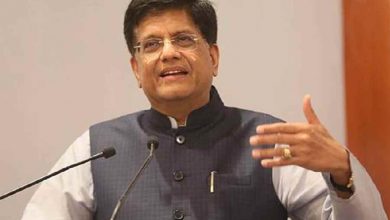Par panel asks MNRE to increase solar capacity addition target

New Delhi, Mar 28 (PTI): A parliamentary panel has asked the Ministry of New & Renewable Energy (MNRE) to increase the capacity addition target under the scheme for setting up grid-connected solar projects by CPSUs and to take pro-active steps to encourage more participation from these units.
MNRE is implementing the scheme for setting up grid-connected solar PV power projects by central public sector undertakings (CPSUs) and government organizations with Viability Gap Funding (VGF).
As per the scheme, these projects are implemented with domestically manufactured solar cells and modules. “Target under the scheme for setting up of grid-connected solar PV power projects by CPSUs and government organizations should be increased.
“Since only a few CPSUs have participated in the scheme till date, the Ministry should take pro-active steps and encourage more CPSUs/government organizations to participate in the scheme,” said Parliamentary Standing Committee on Energy in its 17th report tabled in Parliament earlier this month.
On providing VGF under the scheme, MNRE explained that VGF provided under the scheme envisages to cover cost difference between domestically-produced solar PV cells and modules and the imported ones.
MNRE has also submitted that under CPSU Scheme Phase-II, there is no concept of quoting of tariffs and the bidders are required to quote VGF, the maximum permissible limit for which is Rs 70 lakh/MW.
Under Phase-I of the scheme of 1000 MW, nine CPSUs participated. These are NTPC, BHEL, Rashtriya Ispat Nigam, NHPC, ONGC, GAIL , Scooters India, Dadra & Nagar Haveli Power Distribution Corporation and NLC India.
Under CPSU Scheme Phase-II of 12000 MW, seven CPSUs/ government organizations have participated so far. These are NHDC, Singareni Collieries Company, Assam Power Distribution Company, Delhi Metro Rail Corporation, Nalanda University, NTPC and Indore Municipal Corporation.
The panel also noted that the target set for solar rooftops cannot be achieved without proper implementation of the Net/Gross Metering and there is a need to maintain uniformity in terms of regulations/model operating procedures/online unified portals etc.
It noted that all the State/Joint Electricity Regulatory Commissions have issued net metering regulations/tariff orders but there is lack of uniformity in this regard.
It observed that in most of the states and Union territories, there is no proper payment mechanism for excess units exported to the grid and the same are generally adjusted in the electricity bill itself.








